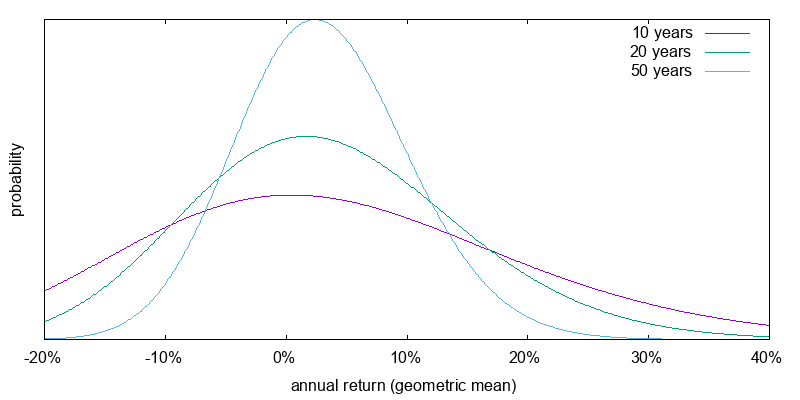Investing in exchange-traded funds (ETFs) can be a daunting task, especially with the vast array of options available in the market. As an investor, you want to make informed decisions that align with your financial goals. That’s where the Navellier ETF Grader comes into play.
In this article, we will explore what the Navellier ETF Grader is and how it can help you make better investment decisions.
What is the Navellier ETF Grader?
The Navellier ETF Grader is a powerful tool developed by renowned investment expert Louis Navellier to analyze and evaluate various Exchange-Traded Funds (ETFs). This innovative tool provides investors with objective insights and ratings, helping them make informed decisions about their investments.
Using advanced algorithms and data analysis techniques, the Navellier ETF Grader assesses a wide range of factors that influence an ETF’s performance, risk, and volatility. These factors include historical performance, risk profiles, expense ratios, liquidity, and more.
By considering these critical elements, the tool aims to provide investors with a comprehensive understanding of an ETF’s potential before they make any investment choices.
Investors can rely on the Navellier ETF Grader as a reliable resource for evaluating different ETFs based on their unique investment goals and preferences. The tool’s comprehensive analysis allows investors to compare multiple funds side by side, enabling them to identify which ones align best with their strategies.
With the Navellier ETF Grader, investors can save valuable time and effort in researching and analyzing individual funds manually. Instead of sifting through complex financial data and reports themselves, they can leverage this user-friendly tool to access clear insights and ratings that facilitate decision-making.
By using this technology-driven solution, investors gain confidence in their investment choices while minimizing potential risks associated with uninformed decisions. The Navellier ETF Grader empowers investors with actionable information by providing objective evaluations of various ETFs in a simple and intuitive manner.
In summary, the Navellier ETF Grader is an invaluable resource for investors seeking to make well-informed decisions about their investments in Exchange-Traded Funds. With its comprehensive analysis capabilities and user-friendly interface, this powerful tool helps individuals navigate the complex world of investing with ease and confidence.
How to Use the Navellier ETF Grader
The Navellier ETF Grader is a powerful tool that can help investors analyze and evaluate Exchange-Traded Funds (ETFs) with ease. By following a step-by-step guide, users can access and utilize this tool efficiently.
To begin, accessing the Navellier ETF Grader is simple. Users can either visit their website or use the mobile application if available. Once logged in or after creating an account, investors can proceed to follow the outlined steps.
Firstly, users are required to enter the ticker symbol or name of the desired ETF they wish to analyze. This step allows for targeted evaluation and analysis of specific funds. Next, users have the option to select specific criteria for analysis such as performance, risk, or expense ratio.
This customization ensures that investors focus on factors that matter most to them.
Once these initial steps are completed, users will be presented with grades or ratings provided by the Navellier ETF Grader. These grades offer a quick snapshot of an ETF’s overall potential and serve as a valuable guide for investment decisions.
The grading system takes into consideration several factors including historical performance compared to relevant benchmarks or indices.
One key feature of the Navellier ETF Grader is its ability to provide insights beyond just grades or ratings. Investors can explore additional information offered by this tool, gaining deeper insights into an ETF’s strengths, weaknesses, and potential risks.
This comprehensive analysis helps investors make well-informed decisions based on reliable data.
Benefits of Using the Navellier ETF Grader
The Navellier ETF Grader offers objective analysis based on historical data and key performance indicators, enabling investors to make informed decisions. It saves time by consolidating information into easily understandable grades/ratings, simplifying research and evaluation.
The tool is accessible to both beginners and experienced investors, with a user-friendly interface and comprehensive analysis. Overall, it enhances decision-making, saves time, and caters to all levels of expertise.
Understanding the Factors Considered by the Navellier ETF Grader
The Navellier ETF Grader evaluates various factors to assess the performance and risk of an ETF. It compares historical returns to benchmarks, considers consistency over different timeframes, and examines volatility, standard deviation, and drawdowns to gauge risk.
The grading system also analyzes expense ratios, fund size, liquidity, trading volume, and portfolio diversification. By considering these factors, investors can make informed decisions aligning with their goals and risk tolerance.
Real-Life Examples: How the Navellier ETF Grader Can Help Investors Make Better Decisions
The Navellier ETF Grader is a valuable tool that aids investors in selecting sector-based ETFs with confidence. By analyzing historical performance, risk profiles, and expense ratios, this tool provides real-life examples to help investors make informed decisions.
With assigned grades or ratings for each option, investors can compare strengths and weaknesses effectively. The Navellier ETF Grader acts as a guide, empowering investors to align their choices with their investment goals and strategy.
The Limitations of the Navellier ETF Grader
The Navellier ETF Grader undoubtedly offers valuable insights, but it is important to recognize that it should not be the sole basis for making investment decisions. While this tool provides a useful starting point, investors must go beyond its analysis and conduct comprehensive research to consider additional factors.
One crucial aspect to consider is the need for supplementary research beyond the Navellier ETF Grader’s findings. This entails delving into macroeconomic trends, geopolitical events, and company-specific news that may impact an ETF’s performance.
By taking these factors into account, investors can gain a more holistic understanding of the market dynamics and make informed decisions.
It is also essential to acknowledge that any grading system may have biases or limitations. No tool is perfect, and even the most advanced algorithms can have their shortcomings. Therefore, approaching the grades or ratings provided by the Navellier ETF Grader with a critical mindset is necessary.
Investors should interpret these grades in conjunction with other research sources to develop a well-rounded view of an ETF’s potential.
Furthermore, it is crucial to remember that grades or ratings are not guarantees of future performance. While they provide valuable indicators, various external factors such as changes in market conditions or unforeseen events can significantly influence an ETF’s trajectory.
Consequently, relying solely on grades without considering other relevant information could lead to misguided investment decisions.
In summary, while the Navellier ETF Grader offers valuable insights, it should be used as one component of a comprehensive research process rather than being solely relied upon.
By conducting additional research and understanding potential biases within any grading system, investors can form a more informed and robust understanding of an ETF’s prospects. Moreover, recognizing that grades are indicators rather than guarantees allows for a more realistic assessment of an investment’s potential performance.
Alternative Tools and Strategies for Evaluating ETFs
When evaluating ETFs, investors have various tools and strategies at their disposal. Fundamental analysis involves assessing an ETF’s underlying assets, financial statements, and market conditions to gauge its long-term potential. Technical analysis focuses on price patterns and trends to predict short-term price movements.
Qualitative assessments consider factors like management expertise and investment strategy fit. Each approach has strengths and weaknesses, so investors should compare them with the Navellier ETF Grader to find the best fit for their investment style and goals.
Ultimately, the choice of tool or method depends on individual preferences and objectives.
Conclusion
When evaluating ETFs, it is crucial for investors to have access to comprehensive analysis and reliable recommendations. The Navellier ETF Grader offers just that, serving as a powerful tool that empowers investors to make informed decisions aligned with their financial goals.
This innovative tool stands out for its objective insights and user-friendly interface, making it accessible to both beginner and experienced investors alike. With the Navellier ETF Grader, investors can gain a deeper understanding of various ETFs through its comprehensive analysis, grades, and recommendations.
By utilizing this tool alongside additional research and analysis, investors can enhance their investment journey. The Navellier ETF Grader provides a solid foundation for decision-making, offering an objective assessment of the potential risks and rewards associated with different ETFs.
What sets the Navellier ETF Grader apart is its ability to cater to investors at all levels of expertise. Whether you are a novice investor or an experienced professional, this tool equips you with the necessary information to evaluate ETFs effectively. It eliminates guesswork by providing clear grades and recommendations based on reliable data.
Investing can be complex and overwhelming without the right tools. The Navellier ETF Grader simplifies the process by presenting information in a user-friendly format that saves time and effort.
With its intuitive interface, users can navigate through various metrics effortlessly, gaining valuable insights into the performance and potential of different ETFs.
[lyte id=’JRcMiCjLLbU’]







